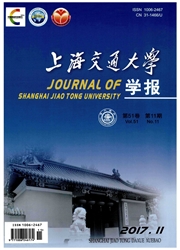

 中文摘要:
中文摘要:
将谐波叠加法与自回归法相结合,构建了新型风时程混合模拟方法,数值模拟三维风速时程,并转为风荷载时程;针对典型塔式起重机塔式结构,建立参数化力学模型.基于Newmark-β方法进行结构风致动力响应分析.基于结构关键点的应力-时间历程并引入S-N曲线法,分析塔架结构的疲劳损伤效应.研究发现,塔架结构节点的风致位移响应、速度响应和加速度响应均较稳定且风致位移响应具有周期性特征,塔臂两端部和塔顶的风致位移和疲劳损伤较大.研究成果可为此类塔架结构的抗风设计提供技术支撑.
 英文摘要:
英文摘要:
Combining the weighted amplitude wave superposition method and the auto-regression method, a novel mixture simulation technique that can simulate the time histories of 3D wind velocity series was produced. The wind velocity time series were converted to the time series of 3D wind loadings. For a typical tower crane tower, the parametric mechanical model was established. The analysis of wind-induced vibration responses was conducted by Newmark-β approach. After obtaining the time histories of the stresses for structural hotspots, the method of S-N curve was used to study the effects of structural fatigue dam- age. The results show that the time history curves of structural wind-induced displacement, velocity and acceleration of each node on the tower are stable respectively and structural wind-induced displacement has certain periodicity. The deformation and fatigue damage on both ends of the boom and the top of the tower are relatively greater. These results are expected to provide reference for the wind-resistant design of tower structures.
 同期刊论文项目
同期刊论文项目
 同项目期刊论文
同项目期刊论文
 期刊信息
期刊信息
